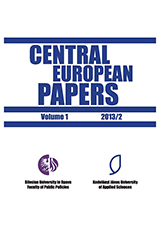Organizational structure of transforming League of Communists of Serbia (Part II)
Organizational structure of transforming League of Communists of Serbia (Part II)
Author(s): Lukáš VomlelaSubject(s): Politics / Political Sciences
Published by: Slezská univerzita v Opavě, Fakulta veřejných politik
Keywords: Yugoslavia; Serbia; Vojvodina; Kosovo; communism; transition; League of Communists of Serbia; League of Communists of Yugoslavia
Summary/Abstract: The main aim of the article is to explain the advantages of organizational structure of the League of Communists of Serbia, which enabled the party to remain in power after the Serbian elections in 1990. The article focuses on several factors which strengthened the central leadership of the Serbian communist party, such as the completed process of generational changes, intensive and frequent party purges, the decrease of party membership and the party’s ability to recruit new members, ethnic homogeneity among party members, the reaction of party leaders to the demands of Serbian opposition, charismatic leaders and the level of dependence on the federal authorities and the other Leagues of communists. Although the article focuses mainly on the transformation of the League of Communists of Serbia, it also deals with the party organizations of other republics and autonomous provinces as well as the party’s army organization of the League of Communists of Yugoslav People’s Army, which was also member of the League of Communists of Yugoslavia. After adopting the new constitution in 1974 the republics and autonomous provinces became even more independent on the federal institutions, and even the differences among the communists during the 1980s, after the death of Tito, arose, which affected further political development of Yugoslavia.
Journal: Central European Papers
- Issue Year: 1/2013
- Issue No: 2
- Page Range: 64-75
- Page Count: 12
- Language: English

